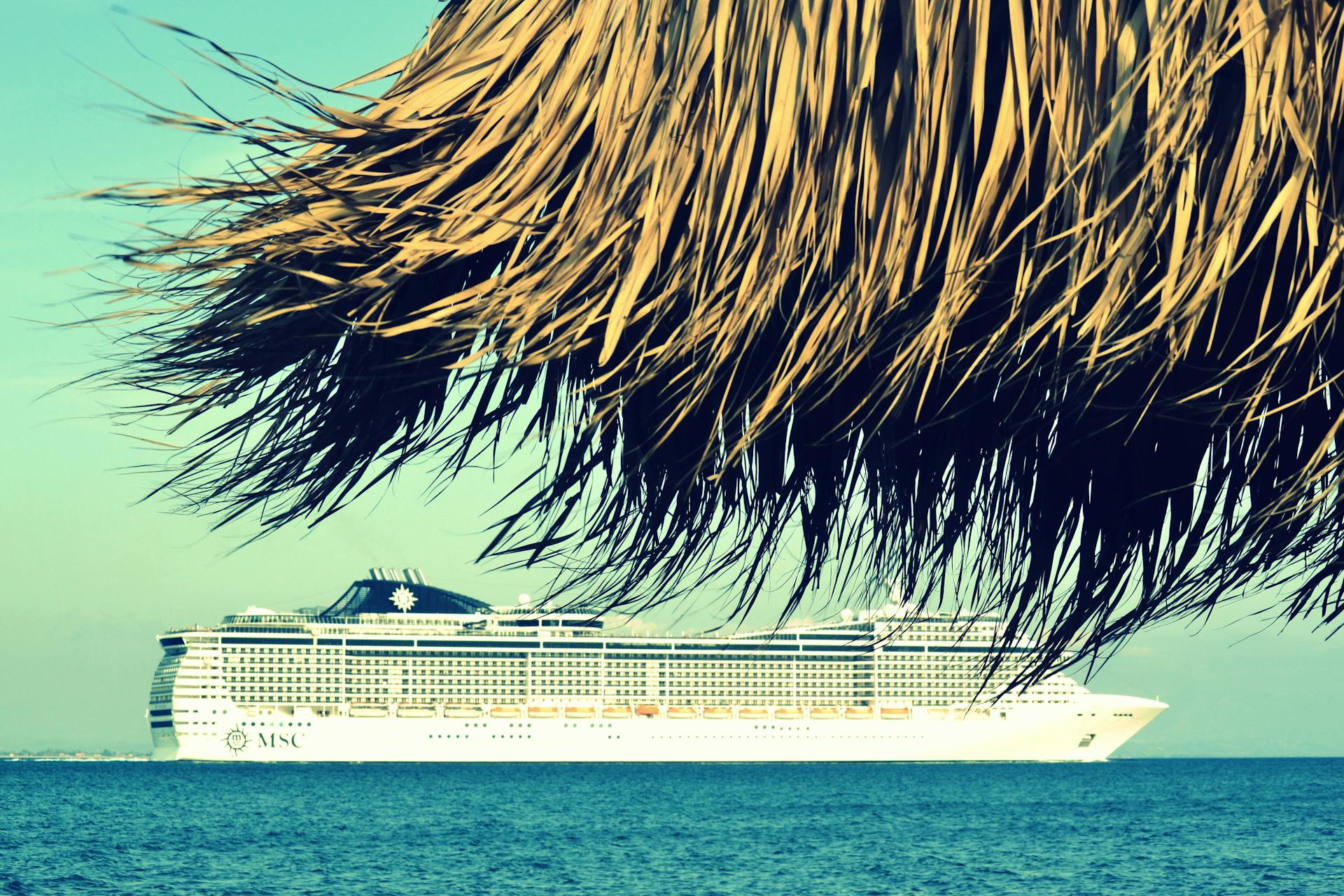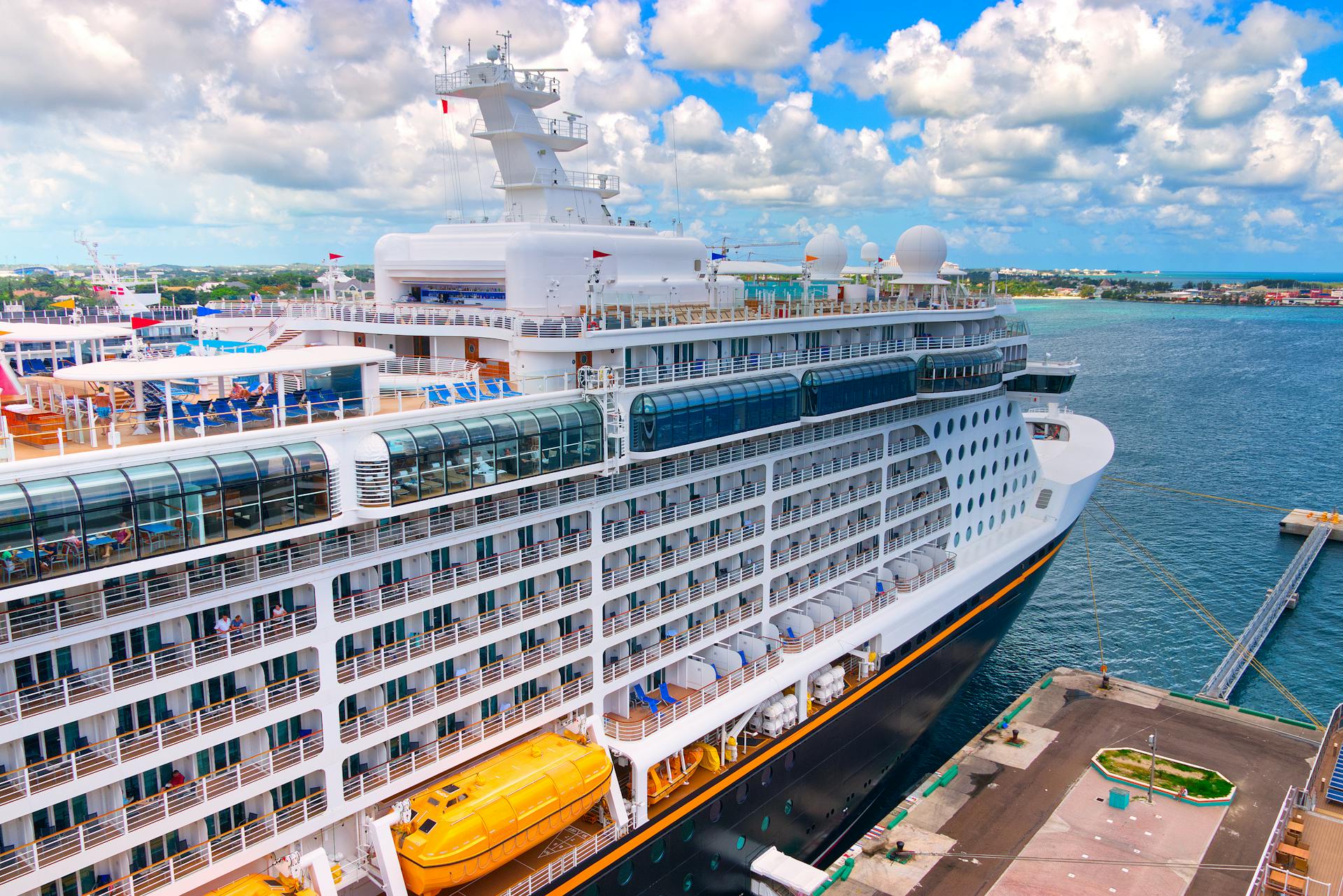
Cruise ship pollution in the United States is a growing concern, with millions of passengers and crew members generating massive amounts of waste each year.
The US Environmental Protection Agency (EPA) estimates that cruise ships produce over 1.3 billion gallons of sewage and 1.5 million tons of solid waste annually.
Cruise ships also emit significant amounts of air pollution, including particulate matter, nitrogen oxides, and sulfur dioxide, which can have serious health impacts on nearby communities.
These pollutants can cause respiratory problems, cardiovascular disease, and even premature death, making cruise ship pollution a major public health concern.
For your interest: Holland America Alaska Ships
The Problem
Cruise ships are often referred to as "floating cities" due to their massive size and complexity, but unfortunately, they also bring a lot of pollution problems with them.
Their per capita pollution is actually worse than a city of the same population, thanks to weak pollution control laws, lax enforcement, and the difficulty of detecting illegal discharges at sea.
Cruise ships impact coastal waters in several US states, including Alaska, California, Florida, and Hawaii.
All cruise ships generate a variety of types of waste, including gray water from sinks, showers, laundries, and galleys, sewage or "black water" from toilets, oily bilge water, hazardous wastes, solid wastes, air pollution from diesel engines, and polluted discharge from sulfur oxide scrubber washwater effluent.
A typical one-week voyage of a 3,000-passenger cruise ship generates 1 million gallons of gray water, 210,000 gallons of sewage, 25,000 gallons of oily bilge water, over 100 gallons of hazardous or toxic waste, 50 tons of garbage and solid waste, and diesel exhaust emissions similar to levels in highly polluted urban areas.
The sheer size of these ships can also cause damage to surrounding ecosystems, including the destruction of local habitats through dredging and the stirring up of sediment that can smother coral reefs.
In addition, cruise ships take in large quantities of ballast water, which can introduce invasive species and serious diseases into U.S. waters, amounting to 1,000 metric tons per typical release.
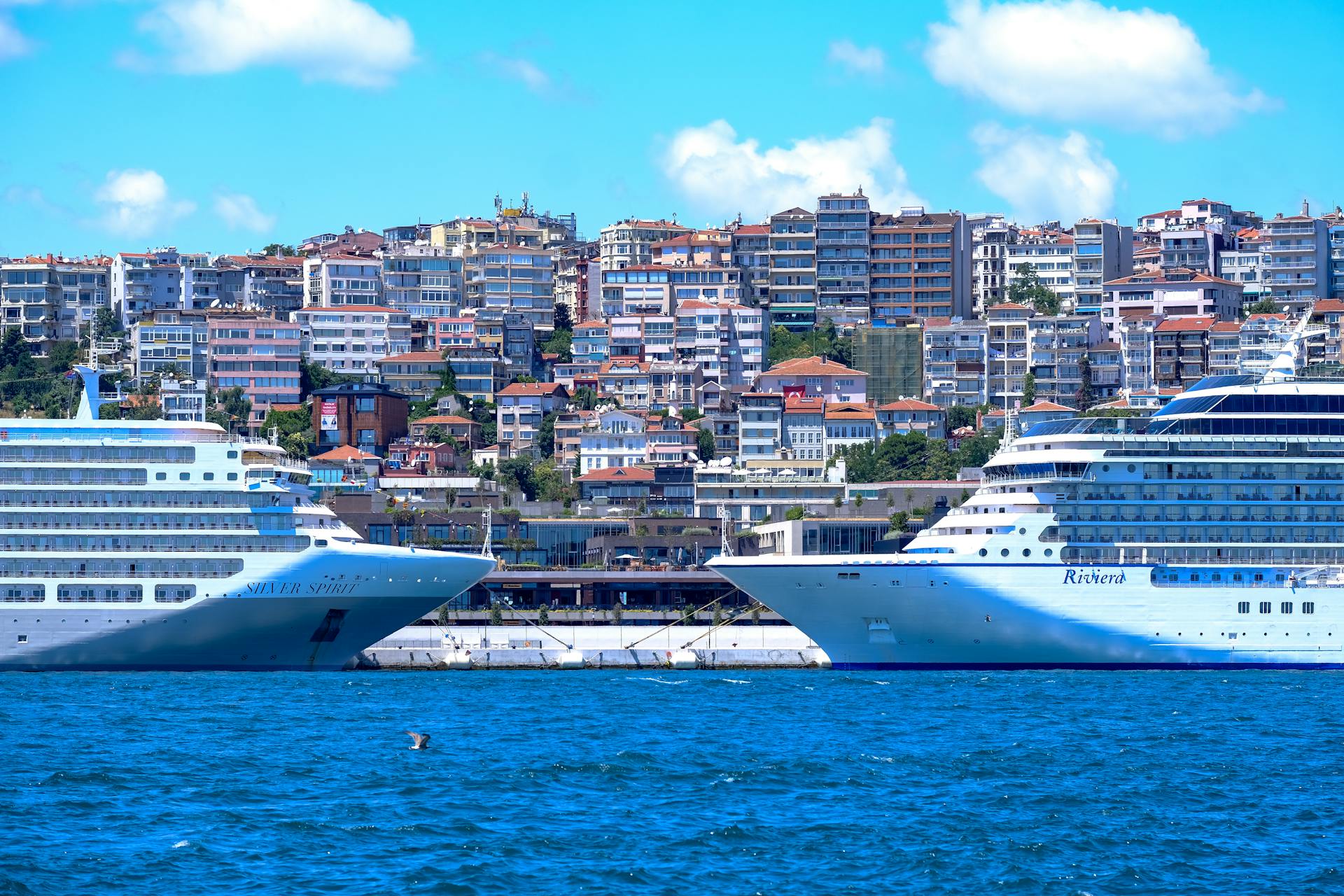
Here's a breakdown of the waste generated by a 3,000-passenger cruise ship on a typical one-week voyage:
- 1 million gallons of gray water
- 210,000 gallons of sewage
- 25,000 gallons of oily bilge water
- Over 100 gallons of hazardous or toxic waste
- 50 tons of garbage and solid waste
- Diesel exhaust emissions and ultrafine particles similar to levels in highly polluted urban areas
Environmental Impacts
Cruise ships can cause serious impacts to the marine environment due to their sheer size and capacity for passengers. The main pollutants generated by a cruise ship are sewage, gray water, oily bilge water, hazardous wastes, and solid wastes.
These waste streams can result in discharges to the marine environment, including sewage, graywater, hazardous wastes, oily bilge water, ballast water, and solid waste. If not properly treated and disposed of, these wastes can be a significant source of pathogens, nutrients, and toxic substances.
Cruise ships represent a small portion of the entire international shipping industry, but their waste streams can have a significant impact on local ecosystems. In particular, types of wastes such as sewage, graywater, and solid waste may be of greater concern for cruise ships due to the large numbers of passengers and crew they carry.
The cruise line industry has historically had a poor record regarding environmental violations. Between 1992 and 1998, there were 87 confirmed illegal discharge cases from cruise ships in U.S. waters, with 81 of these cases involving oil and 6 involving plastic or garbage.
In recent years, some cruise lines have made significant improvements to address environmental concerns. CLIA lines reported a reduction in waste by more than 50% between 1992 and 2002. Several cruise lines have adopted even more stringent voluntary measures, including Celebrity cruises, which require vessels to discharge black water no closer than 12 miles from shore.
The main pollutants generated by a cruise ship are:
- Sewage
- Gray water
- Oily bilge water
- Hazardous wastes
- Solid wastes
Sewage from ships is generally more concentrated than that from land-based sources, as it is diluted with less water when flushed. A typical cruise ship can generate 147,000 gallons of sewage per week.
Regulations
Cruise ships that are 79 feet in length or greater are subject to the requirements of the EPA Vessel General Permit (VGP).
The most recent VGP was published in 2013.
EPA issued its Small Vessel General Permit (sVGP) for smaller cruise ships in 2014, however this permit only applied to ballast water.
In 2018 Congress repealed the sVGP under the Vessel Incidental Discharge Act (VIDA).
As of 2021 small vessels are subject to the ballast water requirements of the VGP, Coast Guard regulations, and applicable state and local government requirements.
The Department of Justice prosecutes violations of federal laws.
The Department of State represents the United States at meetings of the IMO and in international treaty negotiations and is responsible for pursuing foreign-flag violations.
The National Oceanic and Atmospheric Administration (NOAA) works with the Coast Guard and EPA to report on the effects of marine debris.
States and localities also have responsibilities in regulating cruise ships, in addition to federal agencies.
See what others are reading: Washington State Styrofoam Ban
Cruise Industry Response
The cruise industry has been making efforts to reduce its environmental impact in recent years. In fact, after a 2000 GAO report highlighted the industry's pollution problems, several cruise lines implemented new environmental strategies between 2003 and 2008.
Some cruise lines have shifted from single-use plastic packaging to reusable containers, reducing waste production. Princess Cruises and Royal Caribbean Cruise Line, for example, have adopted reusable items to help minimize their waste.
Recycling programs have also been implemented on many cruise ships, with compactors on board making it easier to recycle plastics and aluminum when the ship returns to port. The United States alone gains around 18,000 pounds of recycled goods from these practices.
To reduce air pollution, some cruise lines are exploring alternative energy sources like shorepower, battery power, fuel cells, and liquefied natural gas (LNG). Carnival Corporation, for instance, has partnered with Shell to power its next two new ships with LNG.
The industry's efforts to reduce waste, recycle, and use cleaner energy sources are having a positive impact on marine waters. In fact, CLIA lines reported a reduction in waste by more than 50% between 1992 and 2002.
Here are some notable examples of cruise lines taking extra steps to address environmental concerns:
- Celebrity Cruises requires its vessels to discharge black water at least 12 miles from shore.
- The Cruise Lines International Association (CLIA) has adopted a mandatory waste management document for its members.
- Several cruise lines have implemented voluntary measures to reduce their environmental impact.
Cruise Line Accountability
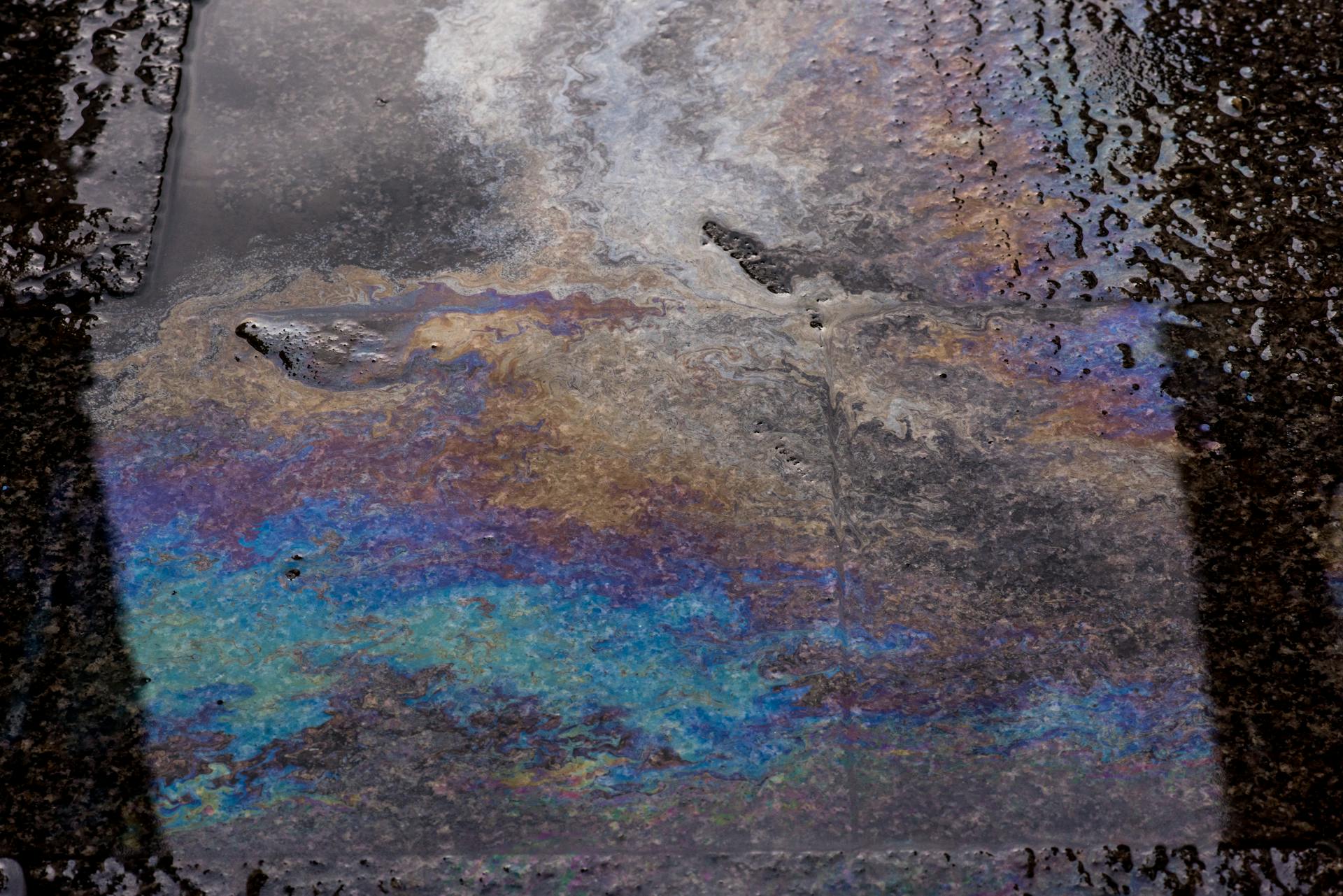
Cruise Line Accountability is a crucial aspect of addressing cruise ship pollution in the United States. The Cruise Lines International Association (CLIA) has made significant strides in reducing waste, with a reported reduction of over 50% between 1992 and 2002.
Several cruise lines have adopted voluntary measures to further reduce their environmental impact. Celebrity cruises, for example, has a corporate policy to discharge black water no closer than 12 miles from shore.
However, some large cruise shipping lines have violated regulations by illegally bypassing the onboard oily water separator and discharging untreated oily wastewater. These violations have been prosecuted and resulted in large fines.
The Carnival Corporation pleaded guilty to criminal charges related to falsifying records of oil-contaminated bilge water in 2002. The company was ordered to pay $18 million in fines and perform community service.
Princess Cruise Lines was fined $40 million in 2016 for dumping oily waste into the seas and attempting to cover it up. This was the largest-ever criminal penalty for intentional vessel pollution at the time.
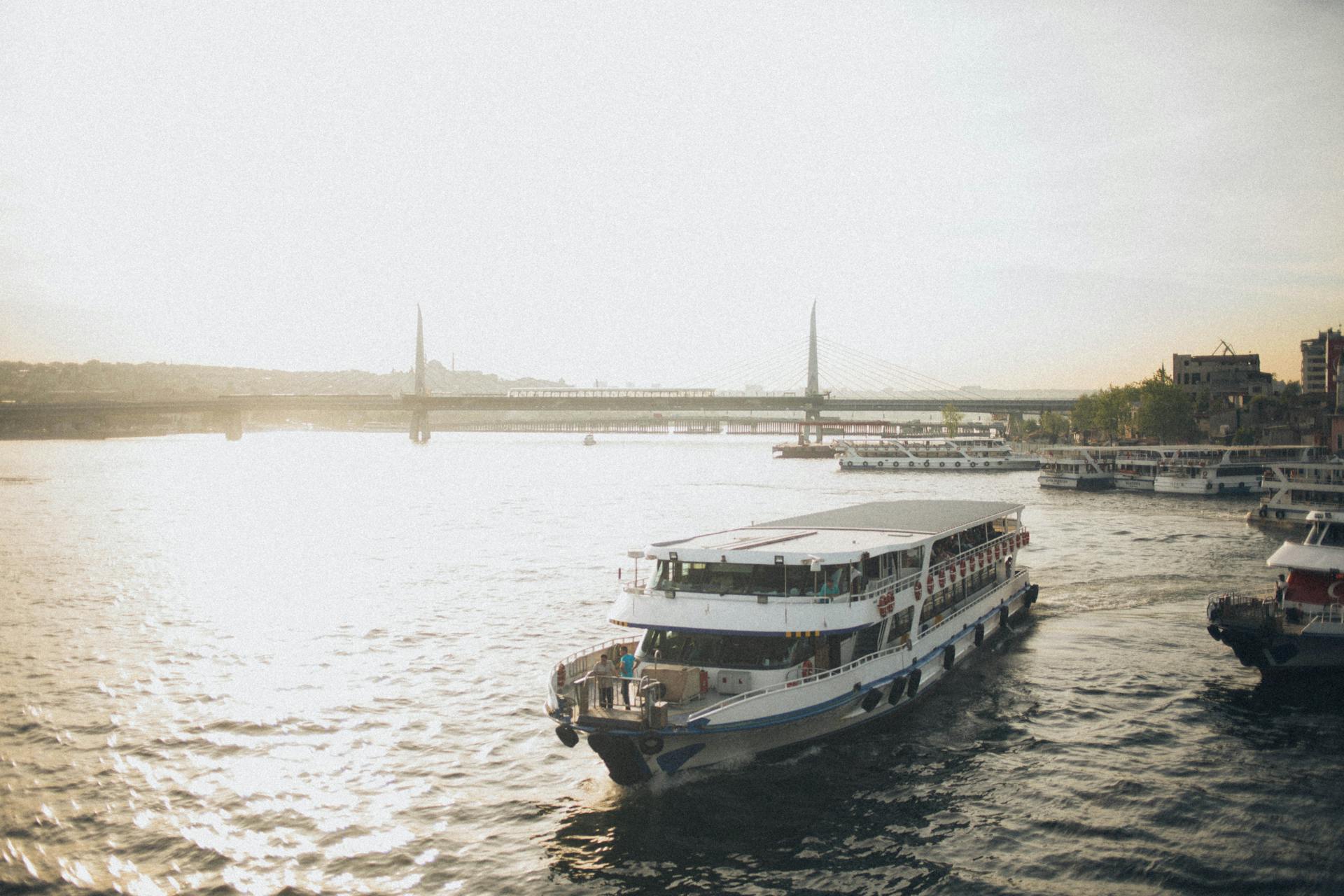
Carnival and its Princess line were ordered to pay an additional $20 million penalty in 2019 for violating the terms of their 2016 probation. This included discharging plastic into waters in the Bahamas and falsifying records.
Here are some notable cases of cruise line accountability:
- Carnival Corporation was fined $18 million in 2002 for falsifying records of oil-contaminated bilge water.
- Princess Cruise Lines was fined $40 million in 2016 for dumping oily waste into the seas and attempting to cover it up.
- Carnival and its Princess line were ordered to pay an additional $20 million penalty in 2019 for violating the terms of their 2016 probation.
Recommendations for Executive Action
The U.S. government has taken steps to address cruise ship pollution in the country. The Department of Transportation has implemented several recommendations to improve oversight of the cruise ship industry.
The Coast Guard has initiated discussions with the cruise ship industry, other federal and state agencies, and environmental groups to improve water quality standards for gray and black water discharges from cruise ships. This is a positive step towards reducing pollution in our oceans.
The Coast Guard has also formed an interagency workgroup with other concerned federal agencies to find ways to better control and regulate waste streams caused by cruise ships. This collaborative effort will help to identify and implement effective solutions to mitigate pollution.
The Coast Guard has engaged state agencies, particularly Alaska, to set up voluntary standards on limits, conditions on gray and black water discharges, and sampling and testing procedures. This is a crucial step in ensuring that cruise ships adhere to strict environmental standards.
The Coast Guard has encouraged member countries to respond when pollution cases are referred to them through its membership on International Maritime Organization committees. This is a significant development in holding foreign governments accountable for pollution cases.
The Coast Guard has reexamined ways to provide more effective aircraft surveillance of cruise ships and other commercial vessels. This includes technology improvements to enhance the Coast Guard's ability to detect, classify, and identify surface targets.
Here are the key actions taken by the Department of Transportation to address cruise ship pollution:
Cruise Line Industry
The cruise line industry has had a mixed record when it comes to environmental concerns. The vast majority of cruise ships are foreign flagged, which can make it difficult for governments to regulate them.
Between 1992 and 1998, there were eighty-seven confirmed illegal discharge cases from cruise ships in U.S. waters. Eighty-one of these cases involved oil, and six involved plastic or garbage.
Seventy-five percent of these violations were accidental, resulting from human or mechanical error. This highlights the need for improved safety measures and regulations.
In recent years, the cruise line industry has made significant improvements to address environmental concerns. The Cruise Lines International Association (CLIA) has reported a reduction in waste by more than 50% between 1992 and 2002.
Some cruise lines have adopted even more stringent voluntary measures. For example, Celebrity cruises requires its vessels to discharge black water no closer than 12 miles from shore, as stated in the Cruise Industry Waste Management Practices and Procedures document.
Frequently Asked Questions
How much pollution does a cruise ship produce compared to cars?
A medium-sized cruise ship emits greenhouse gases equivalent to 12,000 cars, making it a significant contributor to air pollution. This staggering amount of pollution is a major concern for the environment and public health.
What is the carbon footprint of a 7 day cruise?
A 7-day cruise has a significant carbon footprint, with a daily impact of approximately 300kg per person, depending on cabin type and occupancy. This estimate is based on a calculated climate factor of 2.1 for a 2,000-3,000 passenger ship.
Featured Images: pexels.com
